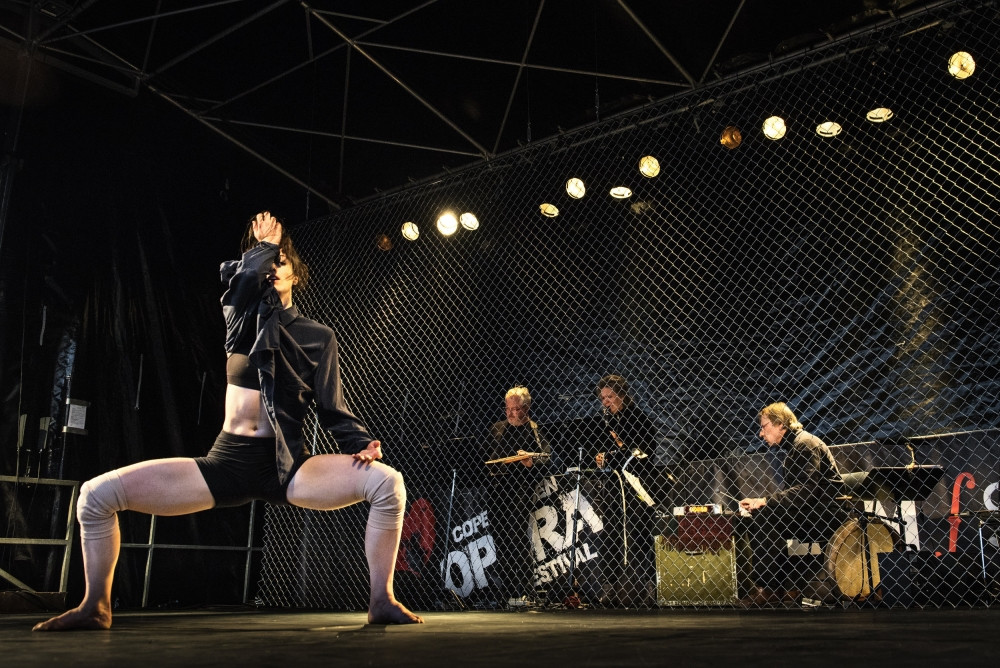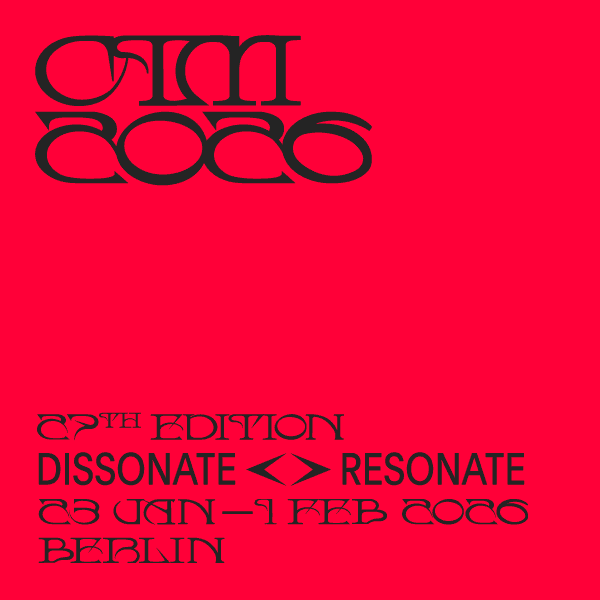
The duality of Bruun
It takes a few listens, but Ensemble MidtVest’s new recording of music by Peter Bruun surely tells us more about the composer’s subtlety than it does about his pop-derived obviousness. And if we must keep talking about New Simplicity then we’d do well to remember that it was a disciplining process more than an expressive one: composers facing up to the fact that if they wanted greater rigour in their work then they had to impose certain constraints on their methods and materials. Accepting Bruun’s music at face value – isolating its constituent parts (rhythmic, harmonic, melodic) and attaching certain characteristics or influences to them – is insufficient. It suggests that the process of simplifying your music’s materials is designed to simplify its message and meaning too (and might even constitute a chickening-out of producing music that’s actually difficult to write). But isn’t the opposite the case?
Clarity, in fact, can carry with it a resounding resonance that many a musical maelstrom has failed to conjure. It also prizes open the abyss so that we can properly experience what lies between the notes themselves. For example, I hear a certain duality in Bruun’s music – a straddling of two facets, both literally in a musical sense but also on a more personal, emotional level – that leaves behind a tension, a residue. That’s what makes the music on Ensemble MidtVest’s new recording worth listening to more than once.
The Green Groves
We can talk in terms of basic musical construction. As the first movement of Bruun’s work for cello and wind quintet Big Bird and His Friends (2009) launches, there’s clear opposition between two contrasting ideas: the initial ‘pecking’ theme and the lyrical cantillations that start to recur over it; a simple pattern (to begin with, at least). But that ‘simplicity’, if not messed around with, can generate its own complexity. And it does. Not only because the two ideas phase teasingly in and out of each other’s paths, but also because the result of that duality is a tension in the middle, a sort of magnetic pull that it’s extremely hard to manufacture for any composer who doesn’t want to repeat his or her self (or others).
I hear it as naivety being castigated by modernity, of the music being dragged into a modern discourse, away from the indulgence of Romanticism.
And that brings us to Bruun’s more intangible sense of duality. I hear it as naivety being castigated by modernity, of the music being dragged into a modern discourse, away from the indulgence of Romanticism (tonality, rhapsody) and the spiraling regression of nostalgia – both of which are elements the material sometimes seems drawn to (but only fleetingly).
There are a few ways Bruun does it. His directness with harmony, by which I mean the placing of a single note that can upset the tonal status quo without trampling on the music’s natural flow (an example, again, is the final chord of the first movement of Big Bird and His Friends where the cello is literally up-rooted by superimposition of a wind harmony above it). Then there’s the music’s shuffling, animalistic nervous energy (shades of Pelle Gudmundsen-Holmgreen) that means it can erupt on itself at the slightest itch or impulse.
The first movement of the piano quartet Pearls of Tears (2004) teeters constantly on the brink of such an eruption, or even total collapse. Invading forces (those stubbornly repeating notes) warn us not to get too comfortable with the nice tunes or even, taking a step back, with the entire ‘sound’ of the music. The next movement goes even further, hammering out major-seconds and exploring the microtones in between but doing so in an overtly polite way. Even when the music seems to have come to a rest, the pianist is still picking away at major-seconds high in the register like some ineffective alarm. The last movement seems to want to prove that a neat rhythmic pattern isn’t all that much fun either, as it hurtles towards darkness and then falters altogether.
I hear these things as Bruun making sure his music never quite does what is expected of it, for all its improvisatory naturalness. The recording’s headline piece The Green Groves (2013) is based on a melody from Bruun’s own setting of an Ursula Andkjær Olsen text of the same title. But Bruun clothes the initial statement of the folk song in coyness, with all manner of suggestive harmonic and rhythmic foliage. Immediately there is another duality at play: the song itself, but a slight suspicion of it too. The narrative is clearly spelt-out by the movement titles and the booklet note, but there’s something nagging at it at the same time. The folk tune is carried all the way through The Green Groves’s five movements, through fragmentary dreams and angry broadsides, but eventually – perhaps because we got too close to it – it makes off, leaving a thin, tense discord in its wake.
Here is another tight trajectory that teases innocence but now turns it, demonically, towards death.
Like Pearls of Tears, Bruun’s string quartet The Black Waters (2012) contains a reference to Persian music, a pearl fisher’s song that came to the composer via the work’s dedicatee Poul Rovsing Olsen. Here is another tight trajectory that teases innocence but now turns it, demonically, towards death. The effect is underlined by particularly evocative playing from Ensemble MidtVest. Throughout the recording, its members sound, collectively, as if they have acute awareness of all the music’s implications.
Exodus
That Bruun has a grasp of the music of the Persian Gulf and its environs is reinforced by his new opera/dance work on the theme of the refugee crisis Exodus, presented by Copenhagen Opera Festival on 2 and 3 August at the outdoor stage of Wilhelm Scenen and featuring Figura Ensemble and Utah-based dance troupe NOW-ID. For this 70-minute piece with seven sung numbers and a few instrumental interludes, Bruun used an ensemble of three instrumentalists playing clarinet (with melodica), guitar (with synthesizer) and percussion (including a Persian daf) with two singers on top (though the instrumentalists sometimes sang as well). More often than not, the musicians from Figura Ensemble provided a cyclic underlay over which Jakob Bloch Jespersen and Nana Bugge Rasmussen could weave twisting, repeating vocal lines generally suggestive of folk song.
Add to that the noise of the city around Torvehallerne. Perhaps Bruun factored this in; perhaps he didn't (the first run, in Salt Lake City in July, took place indoors). But still, the ‘simple’ ground-plan of his score, conceptually, at least, suited the opera festival's outdoor stage: relatively flat instrumental canvasses, over which the two singers could semaphore vocal material that was designed, musically even more than textually, to be clear (the ‘obviousness’ that’s spoken of in relation to Bruun). That’s one way of pinning-down a potentially wild outdoor performance.
But I’m not sure it unlocks the potential of Bruun’s musical structures as laid out in The Green Groves and its companion pieces. For one thing, the acoustic space – as in, no acoustic space at all – made it impossible to hear anything like those little tensions that characterize the music on Ensemble MidtVest’s recording. Amplification sucks the atmosphere from any performance on acoustic instruments and does trained voices no favours either (it was in the coil of those two voices that the bulk of the work’s musical interest lay). I’m not even sure amplification was necessary in a space as small as the temporary Wilhem Scenen.
To the passer-by it could have sounded like some imperialist Western attempt to ‘dignify’ Persian music by bestowing upon it a European operatic tradition.
One effect it does have, naturally, is to draw in the larger, extraneous crowd. So what would that crowd behind the barriers, drifting-in and drifting-out, have heard? I felt some unease hearing Bruun’s sensitively wrought responses to (or imaginings of) Persian folk tunes rendered by operatic voices. To the passer-by it could have sounded like some imperialist Western attempt to ‘dignify’ Persian music by bestowing upon it a European operatic tradition. Just what the refugee crisis doesn’t need.
As it happens, Jespersen’s versatile bass-baritone can sound appealingly plain and vernacular but not so much Rasmussen’s rich mezzo-soprano. On the whole, it made for an awkward half-cultivated delivery that short-circuited the universal nature of the piece. That, and I’m not so sure Bruun’s setting of Ursula Andkjær Olsen’s texts matched the clarity of his musical themes. Where Olsen’s words were at their most prosaic, Bruun’s vocal lines drifted. Sometimes the music sounded plain crude, for which we can thank the amplification and the fact that Bruun’s use of two singers against an accompanying ensemble made for an awful lot of raw, two-note harmonies. No problems with Bruun’s scented, quasi-Persian sonic backdrop expertly played by the ensemble; but I sense he did have problems with the limits he set himself with two singers (not one, and not a chorus) tackling monologue texts (as opposed to dialogue) above it.
There was a lot going on in Exodus, including the decision to have both singers dance – a counterpoint to the three professional dancers from NOW-ID (Jespersen and Rasmussen can move, but would you ask dancers to sing on stage with trained singers?). The work’s lack of narrative specifics allowed it to stray off in a whole load of intangible directions, often at the same time. Thinking back to the performance I’m left with memories of a few striking moments of theatre – not least Rasmussen dragging Jespersen across the front of the stage with a microphone lead to the words ‘let the one who is unclean…’ – but with no recollection of any narrative context or musical counterbalance.
As it is, we saw an interesting, sometimes engaging but ultimately problematic piece of theatre and heard a properly troublesome piece of music.
I’m not equipped to describe the extraordinary and evocative sounds that emanated with increasing protest from Jesper Egelund’s guitar, but I felt they either needed to better control and influence the happenings on stage or to not be there at all. Ensemble MidtVest (and others) have proved that Bruun has the ability to explore the manifold complications that can exist between just two notes, but the extra-musical baggage and outdoor setting of Exodus meant we were never going to be going to that particular place. As it is, we saw an interesting, sometimes engaging but ultimately problematic piece of theatre and heard a properly troublesome piece of music. That Bruun can so evocatively stir-up the alchemy between simple musical elements is what makes the music on The Green Groves recording so cumulatively alluring. Exodus – complicated, collaborative and comparatively big – was never going to get near it.

